- Home
- J. R. R. Tolkien
Tree and Leaf Page 2
Tree and Leaf Read online
Page 2
But even if we apply only these vague and ill-defined limits, it becomes plain that many, even the learned in such matters, have used the term ‘fairy-tale’ very carelessly. A glance at those books of recent times that claim to be collections of ‘fairy-stories’ is enough to show that tales about fairies, about the fair family in any of its houses, or even about dwarfs and goblins, are only a small part of their content. That, as we have seen, was to be expected. But these books also contain many tales that do not use, do not even touch upon, Faërie at all; that have in fact no business to be included.
I will give one or two examples of the expurgations I would perform. This will assist the negative side of definition. It will also be found to lead on to the second question: what are the origins of fairy-stories?
The number of collections of fairy-stories is now very great. In English none probably rival either the popularity, or the inclusiveness, or the general merits of the twelve books of twelve colours which we owe to Andrew Lang and to his wife. The first of these appeared more than fifty years ago (1889), and is still in print. Most of its contents pass the test more or less clearly. I will not analyse them, though an analysis might be interesting, but I note in passing that of the stories in this Blue Fairy Book none are primarily about ‘fairies’, few refer to them. Most of the tales are taken from French sources: a just choice in some ways at that time, as perhaps it would be still (though not to my taste, now or in childhood). At any rate, so powerful has been the influence of Charles Perrault, since his Contes de ma Mère l’Oye were first Englished in the eighteenth century, and of such other excerpts from the vast storehouse of the Cabinet des Fées as have become well known, that still, I suppose, if you asked a man to name at random a typical ‘fairy-story’, he would be most likely to name one of these French things: such as Puss-in-Boots, Cinderella, or Little Red Riding Hood. With some people Grimm’s Fairy Tales might come first to mind.
But what is to be said of the appearance in the Blue Fairy Book of A Voyage to Lilliput? I will say this: it is not a fairy-story, neither as its author made it, nor as it here appears ‘condensed’ by Miss May Kendall. It has no business in this place. I fear that it was included merely because Lilliputians are small, even diminutive – the only way in which they are at all remarkable. But smallness is in Faërie, as in our world, only an accident. Pygmies are no nearer to fairies than are Patagonians. I do not rule this story out because of its satirical intent: there is satire, sustained or intermittent, in undoubted fairy-stories, and satire may often have been intended in traditional tales where we do not now perceive it. I rule it out, because the vehicle of the satire, brilliant invention though it may be, belongs to the class of travellers’ tales. Such tales report many marvels, but they are marvels to be seen in this mortal world in some region of our own time and space; distance alone conceals them. The tales of Gulliver have no more right of entry than the yarns of Baron Munchausen; or than, say, The First Men in the Moon or The Time-Machine. Indeed, for the Eloi and the Mor-locks there would be a better claim than for the Lilliputians. Lilliputians are merely men peered down at, sardonically, from just above the house-tops. Eloi and Morlocks live far away in an abyss of time so deep as to work an enchantment upon them; and if they are descended from ourselves, it may be remembered that an ancient English thinker once derived the ylfe, the very elves, through Cain from Adam.11 This enchantment of distance, especially of distant time, is weakened only by the preposterous and incredible Time Machine itself. But we see in this example one of the main reasons why the borders of fairy-story are inevitably dubious. The magic of Faërie is not an end in itself, its virtue is in its operations: among these are the satisfaction of certain primordial human desires. One of these desires is to survey the depths of space and time. Another is (as will be seen) to hold communion with other living things. A story may thus deal with the satisfaction of these desires, with or without the operation of either machine or magic, and in proportion as it succeeds it will approach the quality and have the flavour of fairy-story.
Next, after travellers’ tales, I would also exclude, or rule out of order, any story that uses the machinery of Dream, the dreaming of actual human sleep, to explain the apparent occurrence of its marvels. At the least, even if the reported dream was in other respects in itself a fairy-story, I would condemn the whole as gravely defective: like a good picture in a disfiguring frame. It is true that Dream is not unconnected with Faërie. In dreams strange powers of the mind may be unlocked. In some of them a man may for a space wield the power of Faërie, that power which, even as it conceives the story, causes it to take living form and colour before the eyes. A real dream may indeed sometimes be a fairy-story of almost elvish ease and skill – while it is being dreamed. But if a waking writer tells you that his tale is only a thing imagined in his sleep, he cheats deliberately the primal desire at the heart of Faërie: the realisation, independent of the conceiving mind, of imagined wonder. It is often reported of fairies (truly or lyingly, I do not know) that they are workers of illusion, that they are cheaters of men by ‘fantasy’; but that is quite another matter. That is their affair. Such trickeries happen, at any rate, inside tales in which the fairies are not themselves illusions; behind the fantasy real wills and powers exist, independent of the minds and purposes of men.
It is at any rate essential to a genuine fairy-story, as distinct from the employment of this form for lesser or debased purposes, that it should be presented as ‘true’. The meaning of ‘true’ in this connection I will consider in a moment. But since the fairy-story deals with ‘marvels’, it cannot tolerate any frame or machinery suggesting that the whole story in which they occur is a figment or illusion. The tale itself may, of course, be so good that one can ignore the frame. Or it may be successful and amusing as a dream-story. So are Lewis Carroll’s Alice stories, with their dream-frame and dream-transitions. For this (and other reasons) they are not fairy-stories.12
There is another type of marvellous tale that I would exclude from the title ‘fairy-story’, again certainly not because I do not like it: namely pure ‘Beast-fable’. I will choose an example from Lang’s Fairy Books: The Monkey’s Heart, a Swahili tale which is given in the Lilac Fairy Book. In this story a wicked shark tricked a monkey into riding on his back, and carried him half-way to his own land, before he revealed the fact that the sultan of that country was sick and needed a monkey’s heart to cure his disease. But the monkey outwitted the shark, and induced him to return by convincing him that the heart had been left behind at home, hanging in a bag on a tree.
The beast-fable has, of course, a connection with fairy-stories. Beasts and birds and other creatures often talk like men in real fairy-stories. In some part (often small) this marvel derives from one of the primal ‘desires’ that lie near the heart of Faërie: the desire of men to hold communion with other living things. But the speech of beasts in the beast-fable, as developed into a separate branch, has little reference to that desire, and often wholly forgets it. The magical understanding by men of the proper languages of birds and beasts and trees, that is much nearer to the true purposes of Faërie. But in stories in which no human being is concerned; or in which the animals are the heroes and heroines, and men and women, if they appear, are mere adjuncts; and above all those in which the animal form is only a mask upon a human face, a device of the satirist or the preacher, in these we have beast-fable and not fairy-story: whether it be Reynard the Fox, or The Nun’s Priest’s Tale, or Brer Rabbit, or merely The Three Little Pigs. The stories of Beatrix Potter lie near the borders of Faërie, but outside it, I think, for the most part.13 Their nearness is due largely to their strong moral element: by which I mean their inherent morality, not any allegorical significatio. But Peter Rabbit, though it contains a prohibition, and though there are prohibitions in fairyland (as, probably, there are throughout the universe on every plane and in every dimension), remains a beast-fable.
Now The Monkey’s Heart is also plainly only a beas
t-fable. I suspect that its inclusion in a ‘Fairy Book’ is due not primarily to its entertaining quality, but precisely to the monkey’s heart supposed to have been left behind in a bag. That was significant to Lang, the student of folk-lore, even though this curious idea is here used only as a joke; for, in this tale, the monkey’s heart was in fact quite normal and in his breast. None the less this detail is plainly only a secondary use of an ancient and very widespread folk-lore notion, which does occur in fairy-stories;14 the notion that the life or strength of a man or creature may reside in some other place or thing; or in some part of the body (especially the heart) that can be detached and hidden in a bag, or under a stone, or in an egg. At one end of recorded folk-lore history this idea was used by George MacDonald in his fairy story The Giant’s Heart, which derives this central motive (as well as many other details) from well-known traditional tales. At the other end, indeed in what is probably one of the oldest stories in writing, it occurs in The Tale of the Two Brothers in the Egyptian D’Orsigny papyrus. There the younger brother says to the elder:
‘I shall enchant my heart, and I shall place it upon the top of the flower of the cedar. Now the cedar will be cut down and my heart will fall to the ground, and thou shalt come to seek for it, even though thou pass seven years in seeking it; but when thou hast found it, put it into a vase of cold water, and in very truth I shall live.’15
But that point of interest and such comparisons as these bring us to the brink of the second question: What are the origins of ‘fairy-stories’? That must, of course, mean: the origin or origins of the fairy elements. To ask what is the origin of stories (however qualified) is to ask what is the origin of language and of the mind.
ORIGINS
Actually the question: What is the origin of the fairy element? lands us ultimately in the same fundamental inquiry; but there are many elements in fairy-stories (such as this detachable heart, or swan-robes, magic rings, arbitrary prohibitions, wicked step-mothers, and even fairies themselves) that can be studied without tackling this main question. Such studies are, however, scientific (at least in intent); they are the pursuit of folklorists or anthropologists: that is of people using the stories not as they were meant to be used, but as a quarry from which to dig evidence, or information, about matters in which they are interested. A perfectly legitimate procedure in itself – but ignorance or forgetfulness of the nature of a story (as a thing told in its entirety) has often led such inquirers into strange judgements. To investigators of this sort recurring similarities (such as this matter of the heart) seem specially important. So much so that students of folklore are apt to get off their own proper track, or to express themselves in a misleading ‘shorthand’: misleading in particular, if it gets out of their monographs into books about literature. They are inclined to say that any two stories that are built round the same folklore motive, or are made up of a generally similar combination of such motives, are ‘the same stories’. We read that Beowulf ‘is only a version of Dat Erdmänneken’; that ‘The Black Bull of Norroway is Beauty and the Beast’, or ‘is the same story as Eros and Psyche’; that the Norse Mastermaid (or the Gaelic Battle of the Birds16 and its many congeners and variants) is ‘the same story as the Greek tale of Jason and Medea’.
Statements of that kind may express (in undue abbreviation) some element of truth; but they are not true in a fairy-story sense, they are not true in art or literature. It is precisely the colouring, the atmosphere, the unclassifiable individual details of a story, and above all the general purport that informs with life the undissected bones of the plot, that really count. Shakespeare’s King Lear is not the same as Layamon’s story in his Brut. Or to take the extreme case of Red Riding Hood: it is of merely secondary interest that the re-told versions of this story, in which the little girl is saved by wood-cutters, is directly derived from Perrault’s story in which she was eaten by the wolf. The really important thing is that the later version has a happy ending (more or less, and if we do not mourn the grandmother overmuch), and that Perrault’s version had not. And that is a very profound difference, to which I shall return.
Of course, I do not deny, for I feel strongly, the fascination of the desire to unravel the intricately knotted and ramified history of the branches on the Tree of Tales. It is closely connected with the philologists’ study of the tangled skein of Language, of which I know some small pieces. But even with regard to language it seems to me that the essential quality and aptitudes of a given language in a living moment is both more important to seize and far more difficult to make explicit than its linear history. So with regard to fairy-stories, I feel that it is more interesting, and also in its way more difficult, to consider what they are, what they have become for us, and what values the long alchemic processes of time have produced in them. In Dasent’s words I would say: ‘We must be satisfied with the soup that is set before us, and not desire to see the bones of the ox out of which it has been boiled.’17 Though, oddly enough, Dasent by ‘the soup’ meant a mishmash of bogus pre-history founded on the early surmises of Comparative Philology; and by ‘desire to see the bones’ he meant a demand to see the workings and the proofs that led to these theories. By ‘the soup’ I mean the story as it is served up by its author or teller, and by ‘the bones’ its sources or material – even when (by rare luck) those can be with certainty discovered. But I do not, of course, forbid criticism of the soup as soup.
I shall therefore pass lightly over the question of origins. I am too unlearned to deal with it in any other way; but it is the least important of the three questions for my purpose, and a few remarks will suffice. It is plain enough that fairy-stories (in wider or in narrower sense) are very ancient indeed. Related things appear in very early records; and they are found universally, wherever there is language. We are therefore obviously confronted with a variant of the problem that the archaeologist encounters, or the comparative philologist: with the debate between independent evolution (or rather invention) of the similar; inheritance from a common ancestry; and diffusion at various times from one or more centres. Most debates depend on an attempt (by one or both sides) at over-simplification; and I do not suppose that this debate is an exception. The history of fairy-stories is probably more complex than the physical history of the human race, and as complex as the history of human language. All three things: independent invention, inheritance, and diffusion, have evidently played their part in producing the intricate web of Story. It is now beyond all skill but that of the elves to unravel it.18 Of these three invention is the most important and fundamental, and so (not surprisingly) also the most mysterious. To an inventor, that is to a storymaker, the other two must in the end lead back. Diffusion (borrowing in space), whether of an artefact or a story, only refers the problem of origin elsewhere. At the centre of the supposed diffusion there is a place where once an inventor lived. Similarly with inheritance (borrowing in time): in this way we arrive at last only at an ancestral inventor. While if we believe that sometimes there occurred the independent striking out of similar ideas and themes or devices, we simply multiply the ancestral inventor but do not in that way the more clearly understand his gift.
Philology has been dethroned from the high place it once had in this court of inquiry. Max Müller’s view of mythology as a ‘disease of language’ can be abandoned without regret. Mythology is not a disease at all, though it may like all human things become diseased. You might as well say that thinking is a disease of the mind. It would be more near the truth to say that languages, especially modern European languages, are a disease of mythology. But Language cannot, all the same, be dismissed. The incarnate mind, the tongue, and the tale are in our world coeval. The human mind, endowed with the powers of generalisation and abstraction, sees not only green-grass, discriminating it from other things (and finding it fair to look upon), but sees that it is green as well as being grass. But how powerful, how stimulating to the very faculty that produced it, was the invention of the adjective: no spell or in
cantation in Faërie is more potent. And that is not surprising: such incantations might indeed be said to be only another view of adjectives, a part of speech in a mythical grammar. The mind that thought of light, heavy, grey, yellow, still, swift, also conceived of magic that would make heavy things light and able to fly, turn grey lead into yellow gold, and the still rock into swift water. If it could do the one, it could do the other; it inevitably did both. When we can take green from grass, blue from heaven, and red from blood, we have already an enchanter’s power – upon one plane; and the desire to wield that power in the world external to our minds awakes. It does not follow that we shall use that power well upon any plane. We may put a deadly green upon a man’s face and produce a horror; we may make the rare and terrible blue moon to shine; or we may cause woods to spring with silver leaves and rams to wear fleeces of gold, and put hot fire into the belly of the cold worm. But in such ‘fantasy’, as it is called, new form is made; Faërie begins; Man becomes a sub-creator.
An essential power of Faërie is thus the power of making immediately effective by the will the visions of ‘fantasy’. Not all are beautiful or even wholesome, not at any rate the fantasies of fallen Man. And he has stained the elves who have this power (in verity or fable) with his own stain. This aspect of ‘mythology’ – sub-creation, rather than either representation or symbolic interpretation of the beauties and terrors of the world – is, I think, too little considered. Is that because it is seen rather in Faërie than upon Olympus? Because it is thought to belong to the ‘lower mythology’ rather than to the ‘higher’? There has been much debate concerning the relations of these things, of folk-tale and myth; but, even if there had been no debate, the question would require some notice in any consideration of origins, however brief.

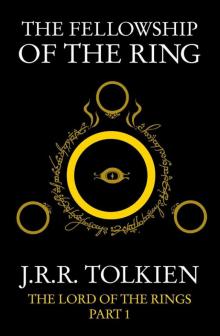 The Fellowship of the Ring
The Fellowship of the Ring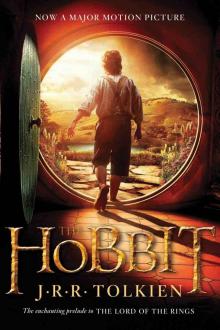 The Hobbit
The Hobbit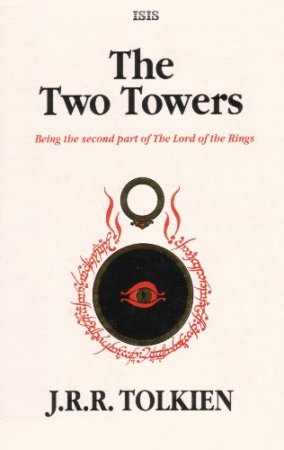 The Two Towers
The Two Towers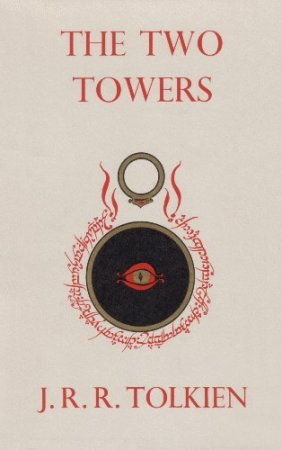 The Return of the King
The Return of the King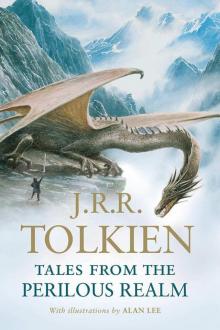 Tales From the Perilous Realm
Tales From the Perilous Realm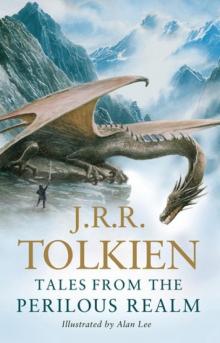 Leaf by Niggle
Leaf by Niggle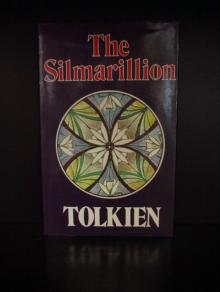 The Silmarillon
The Silmarillon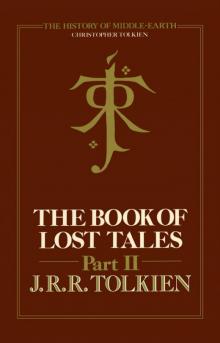 The Book of Lost Tales, Part Two
The Book of Lost Tales, Part Two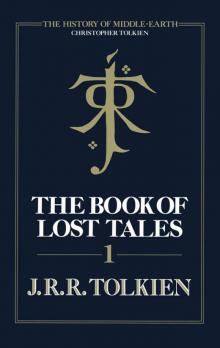 The Book of Lost Tales, Part One
The Book of Lost Tales, Part One The Book of Lost Tales 2
The Book of Lost Tales 2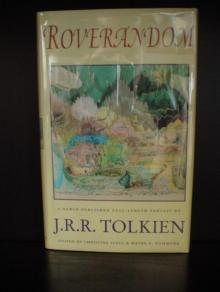 Roverandom
Roverandom Smith of Wootton Major
Smith of Wootton Major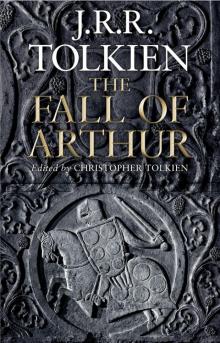 The Fall of Arthur
The Fall of Arthur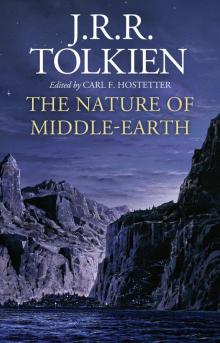 The Nature of Middle-earth
The Nature of Middle-earth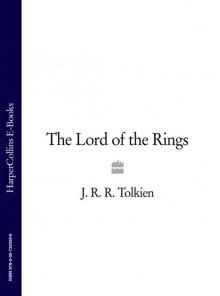 The Lord of the Rings: The Fellowship of the Ring, The Two Towers, The Return of the King
The Lord of the Rings: The Fellowship of the Ring, The Two Towers, The Return of the King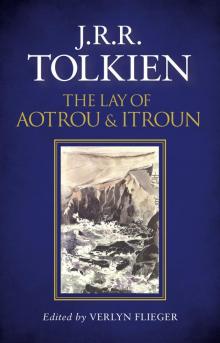 The Lay of Aotrou and Itroun
The Lay of Aotrou and Itroun lord_rings.qxd
lord_rings.qxd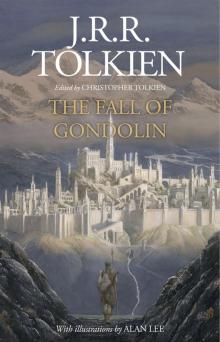 The Fall of Gondolin
The Fall of Gondolin The Book of Lost Tales, Part 1
The Book of Lost Tales, Part 1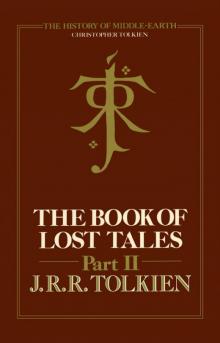 The Book of Lost Tales, Part 2
The Book of Lost Tales, Part 2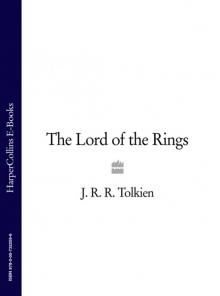 The Lord of the Rings
The Lord of the Rings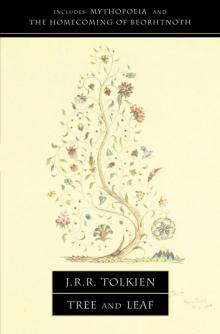 Tree and Leaf
Tree and Leaf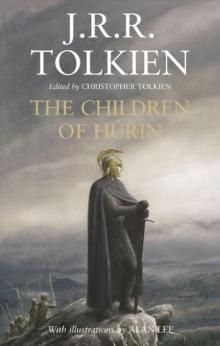 The Children of Húrin
The Children of Húrin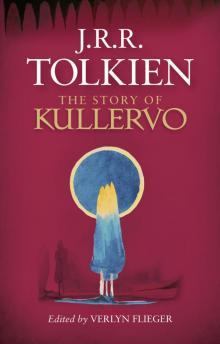 The Story of Kullervo
The Story of Kullervo Letters From Father Christmas
Letters From Father Christmas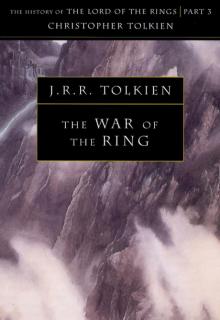 The History of Middle Earth: Volume 8 - The War of the Ring
The History of Middle Earth: Volume 8 - The War of the Ring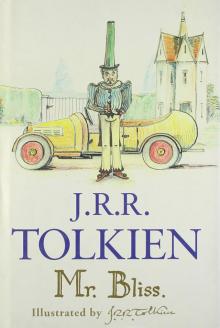 Mr. Bliss
Mr. Bliss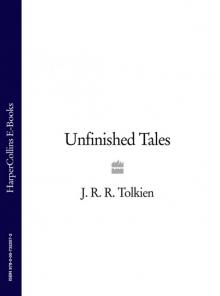 Unfinished Tales
Unfinished Tales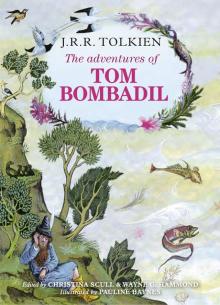 The Adventures of Tom Bombadil
The Adventures of Tom Bombadil Beowulf: A Translation and Commentary, together with Sellic Spell
Beowulf: A Translation and Commentary, together with Sellic Spell The Silmarillion
The Silmarillion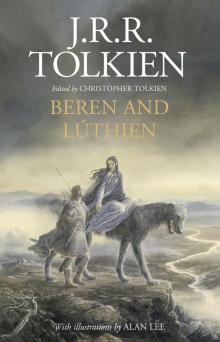 Beren and Lúthien
Beren and Lúthien